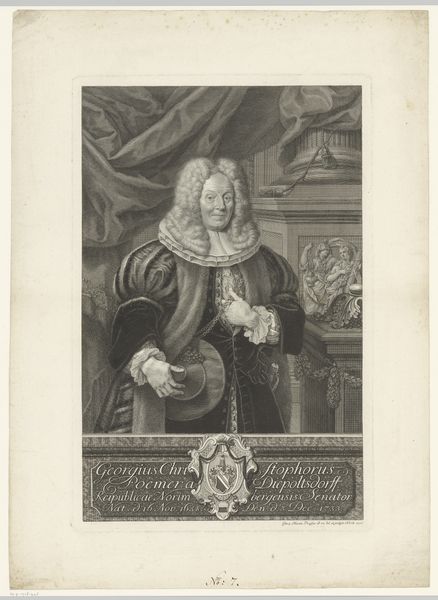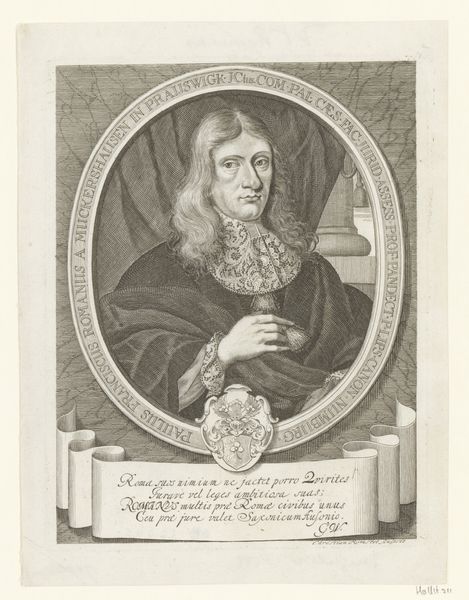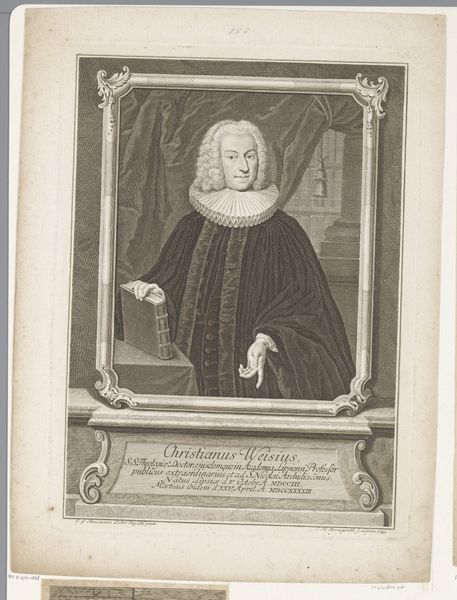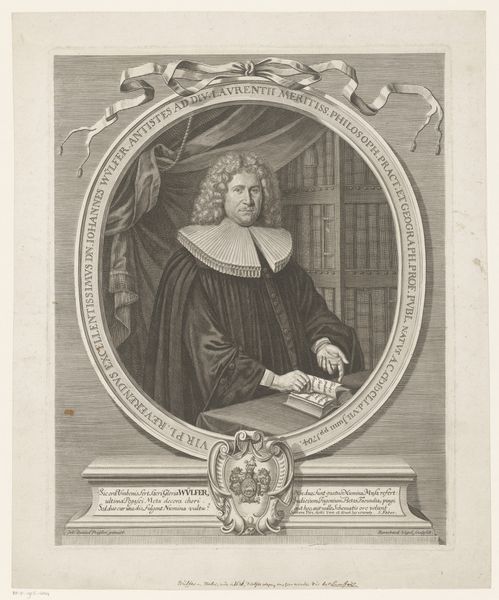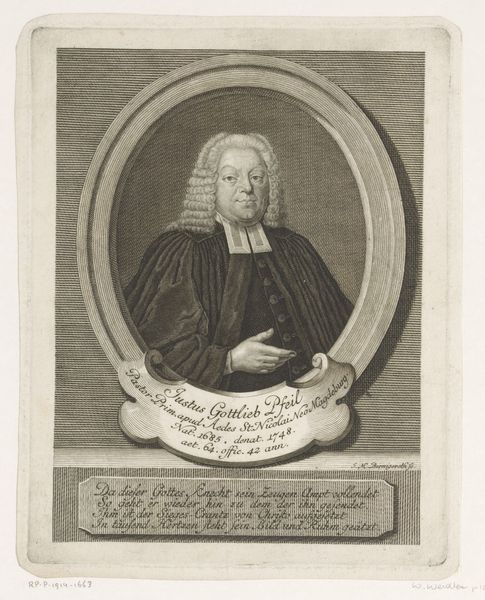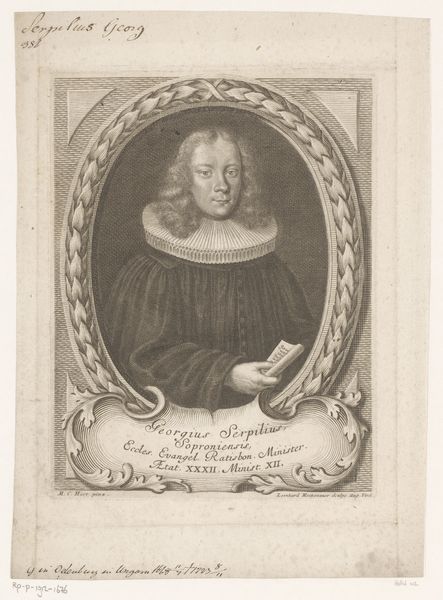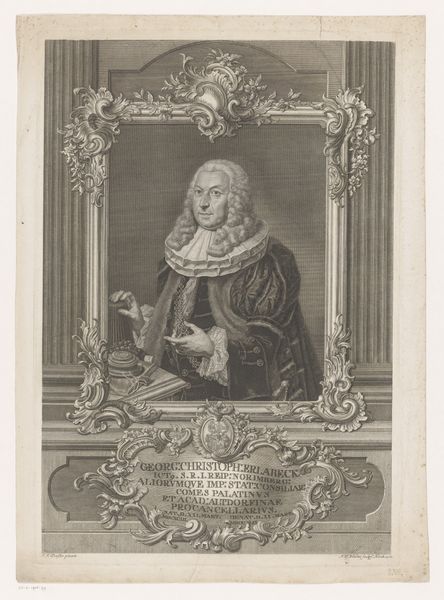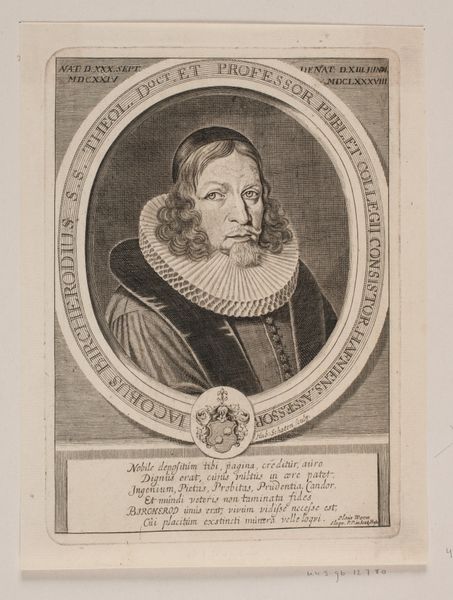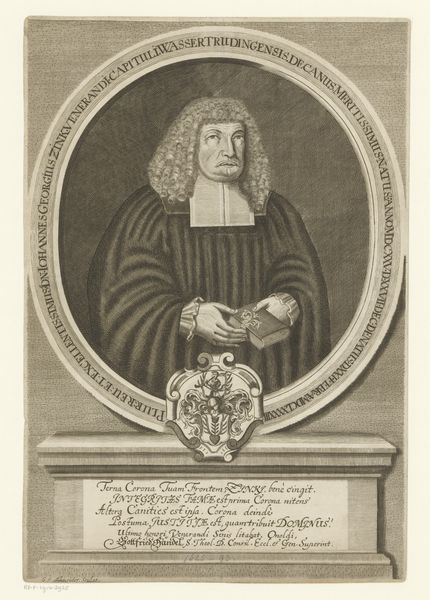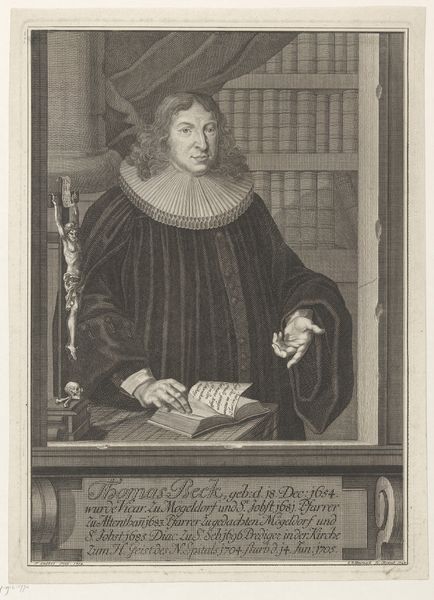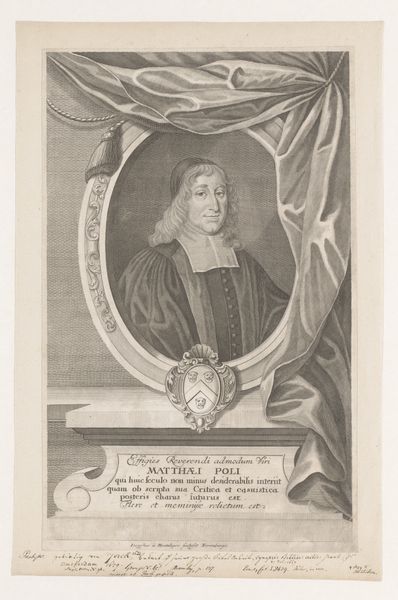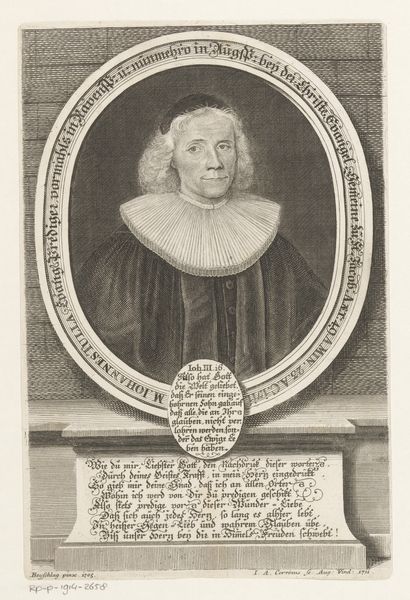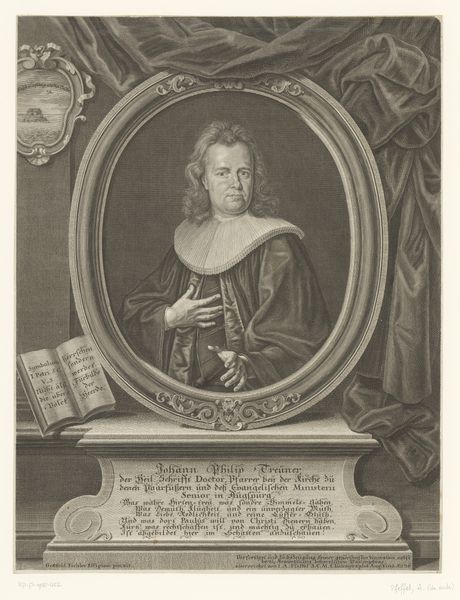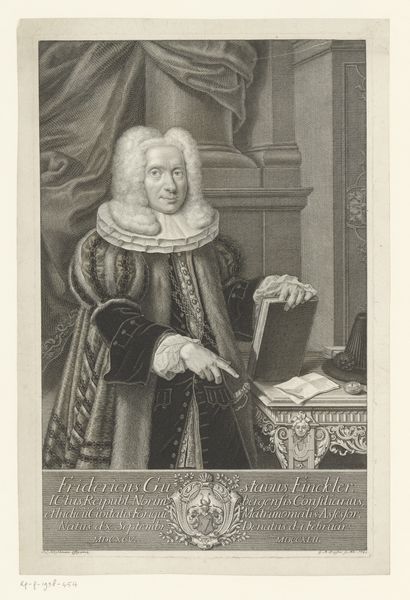
print, engraving
#
portrait
#
baroque
# print
#
old engraving style
#
figuration
#
form
#
19th century
#
line
#
history-painting
#
engraving
Dimensions: height 202 mm, width 161 mm
Copyright: Rijks Museum: Open Domain
Curator: This is a 1688 engraving by Johann Tscherning, a portrait of Daniel Casper von Lohenstein, currently held at the Rijksmuseum. What strikes you about it? Editor: It feels very formal, almost austere. I'm curious about the contrast between the detailed lace collar and the somber, almost severe expression. How do you interpret this work, especially considering its historical context? Curator: Exactly! Let's unpack that formality. Tscherning created this during the Baroque period. But it’s crucial to understand Lohenstein's role. He was a prominent statesman and writer, deeply embedded in the social and political fabric of his time. Portraits like these weren’t merely aesthetic; they were carefully constructed statements of power and intellect. How might Lohenstein's social standing influenced the imagery chosen for this engraving? Editor: So, it's not just about capturing a likeness, but also about projecting a certain image that reinforced his status? The book in his hand and the family crest could be visual cues to his authority. Curator: Precisely. It's a deliberate performance of identity. And think about the conventions of portraiture at the time. Consider his expression and bearing in light of courtly expectations and ideas about masculinity. Where does that fall short or comply? It would also be valuable to examine what he was known for as a writer in terms of themes and politics in this portrait, as that's obviously being alluded to. Editor: It seems much more complex than just a simple depiction of a man. Understanding the cultural context really adds depth. Curator: Indeed. By situating the work within the social and intellectual currents of the late 17th century, we gain insight into the portrait’s role as a cultural artifact, a deliberate construction of identity intertwined with power and societal expectations. I find it fascinating to see the complex narratives hidden within seemingly straightforward portraits. Editor: Thanks, I'll never look at a portrait the same way again.
Comments
No comments
Be the first to comment and join the conversation on the ultimate creative platform.
